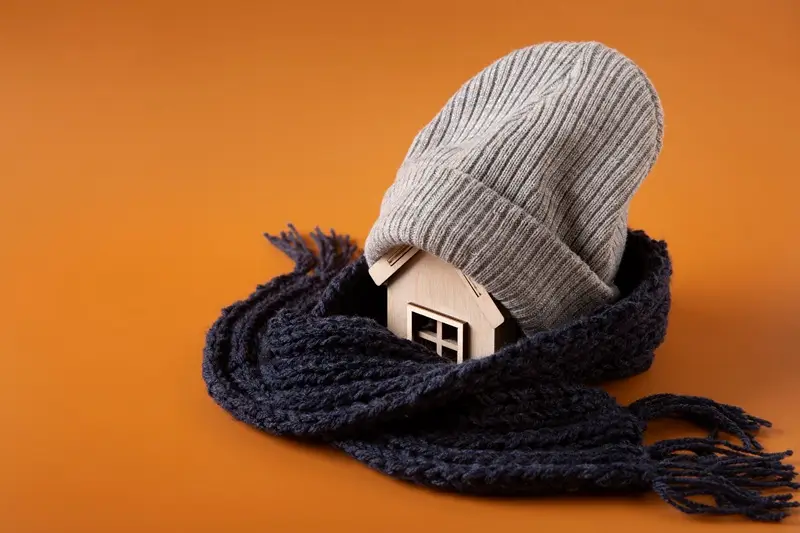
Beat the Freeze: Top Tips for Getting Your Home Ready for Winter
As the winter months roll in, it’s time to prepare your home to withstand the cold. Whether you’re anticipating freezing temperatures, snowstorms, or just a chill in the air, taking proactive steps now will ensure your home stays warm, energy-efficient, and safe throughout the season. Here are some top tips to help you get your home ready for winter.
1. Seal Drafts and Gaps
One of the easiest and most effective ways to prepare your home for winter is by sealing up drafts and gaps where heat might escape. Small leaks around windows, doors, and even electrical outlets can let in cold air, making your heating system work harder to keep your home warm.
Weatherstripping and Caulking:
Check the weatherstripping around doors and windows. If it’s worn or damaged, replace it. You can also apply caulk around the edges of windows and doors to create a tight seal and prevent drafts.
Use Draft Stoppers:
Place draft stoppers or rolled towels at the bottom of exterior doors. This simple addition will reduce heat loss and make a noticeable difference in your home’s temperature.
By sealing up these gaps, you’ll keep the cold outside where it belongs and save money on heating bills.
2. Check Your Heating System
Before the temperatures really start to drop, give your heating system a thorough check to ensure it’s in top shape. A malfunctioning furnace or heat pump can leave you shivering during a cold snap, so it’s crucial to address any potential issues now.
Furnace Maintenance:
If you have a furnace, be sure to replace the filter and arrange for a professional inspection and cleaning. A well-maintained furnace operates more efficiently and helps minimize the chances of breakdowns during the winter. For expert furnace repair in Sandy, it’s a great idea to schedule a service to ensure everything is in top condition before the colder months arrive.
Thermostat Check:
Test your thermostat to ensure it’s working properly and giving you an accurate reading. Consider upgrading to a programmable thermostat, which can adjust the temperature automatically based on your schedule, ensuring warmth when you need it most.
Radiators and Vents:
If you have radiators or space heaters, ensure they are unobstructed by furniture or other items. You want the heat to circulate efficiently throughout your home.
3. Insulate Your Home
Insulation is key to keeping your home warm in the winter. Poor insulation allows heat to escape through your walls, attic, and floors, which can drive up your energy costs and leave you feeling uncomfortable.
Attic Insulation:
Insulate your attic, as it’s one of the primary areas where heat escapes. Adding extra insulation here can help you maintain a comfortable temperature inside while preventing ice dams from forming on the roof.
Wall Insulation:
If you live in an older home with inadequate wall insulation, consider adding blown-in insulation. Insulating your walls will keep the warmth in and cold air out.
Window Insulation:
If replacing windows is out of your budget, consider using heavy thermal curtains or window insulation film to reduce heat loss. These options are affordable and effective at maintaining a cozy atmosphere inside.
4. Inspect and Clean the Chimney
A fireplace is a great way to stay warm and create a cozy atmosphere during the winter months, but it’s essential to ensure that your chimney is clean and safe to use.
Chimney Sweep:
Hire a professional to inspect and clean your chimney before you light the first fire of the season. Creosote buildup can pose a fire hazard, so it’s vital to remove any blockages.
Check the Fireplace:
Make sure the damper works correctly and seals tightly when closed to prevent heat from escaping through the chimney when the fireplace isn’t in use.
5. Protect Pipes from Freezing
Frozen pipes can burst and cause serious damage to your home, but you can take steps to protect your plumbing from the cold.
Insulate Pipes:
Use pipe insulation or foam sleeves around vulnerable pipes in unheated areas, such as attics, basements, or crawl spaces. This is particularly important for outdoor faucets and exposed pipes.
Drip Faucets:
On extremely cold nights, leave a faucet dripping slightly to keep water moving and prevent pipes from freezing. Open cabinet doors under sinks to allow warm air to circulate around the pipes.
Shut Off Exterior Faucets:
Drain and disconnect garden hoses from outdoor faucets. Shut off the water supply to exterior faucets to avoid the risk of freezing.
6. Clean Gutters and Downspouts
Clogged gutters can lead to ice dams, which prevent melting snow from draining properly off your roof. Ice dams can cause water to back up and seep into your home, leading to costly damage.
Gutter Cleaning:
Clear any leaves, twigs, and debris from your gutters and downspouts. This will allow rainwater and melting snow to flow freely, reducing the risk of ice dams.
Gutter Guards:
Consider installing gutter guards to prevent debris from accumulating in the future. This simple addition will save you time and effort in the long run.
7. Prepare for Winter Storms
Winter storms can bring snow, ice, and power outages. It’s important to be prepared for these unexpected events.
Stock Up on Supplies:
Make sure you have a stock of essentials such as bottled water, canned food, medications, and batteries. If you rely on a space heater, have extra fuel on hand in case of a power outage.
Portable Power Sources:
Consider investing in a backup generator to keep essential appliances running during a power failure. Make sure it’s tested and ready to go.
Shovel and Salt:
Keep a shovel and ice melt on hand to clear your driveway and walkways. Ensuring that your paths are clear of snow and ice will keep you safe and make it easier to get out in case of an emergency.
8. Enhance Your Home’s Curb Appeal
While preparing your home for the winter, don’t forget about the outside! Ensuring that your home looks welcoming and safe throughout the season is just as important as keeping it warm inside.
Outdoor Lighting:
Install outdoor lights along pathways and driveways to help you navigate safely in the dark winter months. Motion-sensor lights are a great option for added security and convenience.
Winterize Landscaping:
Trim back any tree branches that could pose a risk of falling during heavy snow or ice storms. Keep your garden tools and furniture stored to prevent damage.
In Conclusion
Getting your home ready for winter doesn’t have to be a daunting task. By following these simple steps—sealing drafts, checking your heating system, insulating your home, and more—you’ll be prepared to beat the freeze and enjoy a warm, cozy, and energy-efficient home all season long. Take action now, and you’ll be ready to face whatever winter throws your way!



